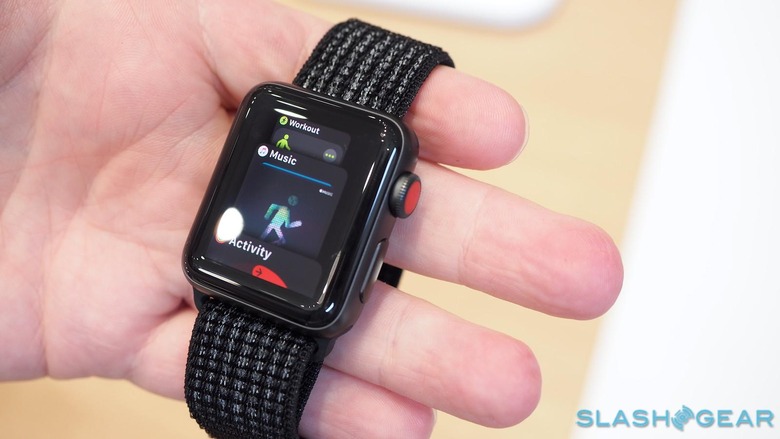Apple Watch To Swap Physical For Virtual Buttons Says Report
Apple plans to change the Apple Watch buttons to touch-sensitive controls, insiders claim, cutting out moving parts and potentially improving battery life of future versions of the smartwatch. The Apple Watch currently has two physical controls: a large button on the side, and the so-called Digital Crown, which both rotates and presses in.
The latter was Apple's take on bringing a classic watch feature into the digital age. The wheel-like control that protrudes from the side of the smartwatch can be used to scroll through longer lists of notifications and more. Pressing in on it acts as a select button.
That scrolling capability will be preserved, but the press-to-select will be replaced with a virtual button. That's according to a source speaking to Fast Company, which suggests Apple is looking to convert the two side buttons to virtual controls. These would echo the mechanism of the virtual home button first seen on the iPhone 7, which did not physically depress.
Instead, Apple used its Taptic Engine – the more precisely-controlled vibration motor that it uses for haptic feedback as well as vibration alerts – to simulate the feel of a button press through the fingertip. The home button was eventually deprecated altogether in the iPhone X, but the Taptic Engine still delivers the feel of a physically-moving control depending on the on-screen interface.

The new Apple Watch will take a similar approach. The side buttons – both the independent button and the press-to-select feature of the Digital Crown – will no longer actually push in, instead registering the pressure of the fingertip and then buzzing for precise haptic feedback. For Apple, there are several upsides to such a system.
For instance, fewer moving parts means it's easier to make the new Apple Watch more water-resistant. The current Apple Watch Series 3 can be worn at depths of up to 50 meters, but is not rated for scuba diving, waterskiing, or anything that involves high-velocity water. Switching to a more sealed design might allow Apple to lift that limitation.
Meanwhile, virtual buttons will leave more internal space, which Apple could use for a bigger battery. That would help either extend runtimes, or offset the greater power demands of things like cellular radios and more powerful processors.
The buttons could also present a completely new opportunity for sensors. Apple is reportedly experimenting with using them as secondary heart-rate sensors, which could give the second point of skin contact that some measurements require. The end-goal, it's suggested, is to do away with delineated buttons altogether, and instead have certain points on the casing of the Apple Watch act as buttons and other controls. Apple could use the new button design in its next Apple Watch Series 4 refresh, it's suggested, or hold off until the Series 5.
Virtual keys have grown in popularity, though the balance of design convenience to usability can be a tricky one. HTC's most recent smartphone, the U12+, for example, uses virtual buttons for its power and volume controls. However, early reviews have been mixed about the haptic response and pressure sensitivity of the phone's unusual keys.
For the Apple Watch, it's a balance that Apple needs to get right. watchOS 5 made its debut at WWDC 2018 this past week, promising far more comprehensive functionality to the smartwatch including the ability to interact with notifications. That suggests Apple expects wearers to spend much more time in contact with the wearable's physical controls.
